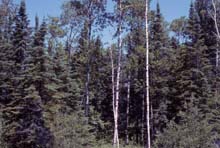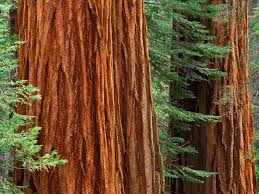The Boreal is the Worlds Largest Land-Base Biome: let’s save this wilderness for them…
“The Boreal forest is the world’s largest land-based biome. Spreading over continents and covering many countries, the Boreal plays a significant role in the planet’s biodiversity and even its climate.” Definition is from link here: http://www.treehugger.com/natural-sciences/30-fascinating-facts-about-the-boreal-forest.html
Millions of plants and animals make their homes in this vast forest community that circles the far northern hemisphere of planet earth.
Temperatures in the boreal forests can reach extremes of highs of 100 degrees and lows of -75 degrees Fahrenheit.
The word boreal is used to describe the phenomenon aurora borealis called the Northern Lights and can be seen from these northern forest communities.
A biome is a large natural community of flora and fauna occupying a major habitat, example: forest or tundra.
This large community covers a vast area of planet earth. The boreal covers most of Canada and Alaska, Sweden, Finland, Norway, most of Russia, and the northern parts of Kazakhstan, Mongolia and Japan. The boreal represents 29% of the world’s forest cover. Read more about this topic here:
http://www.treehugger.com/natural-sciences/30-fascinating-facts-about-the-boreal-forest.html

(Image via BU Land Cover and Land Cover Dynamics)
This boreal forest can be found in the northern most part of WI.
Boreal Forest community facts from WDNR: “Mature stands of this upland forest community are dominated by white spruce and balsam fir, often mixed with white birch, northern white cedar, eastern white pine, eastern hemlock (within its range), balsam-poplar, and quaking aspen.
Mountain-ash may also be present.” From WDNR http://dnr.wi.gov/topic/EndangeredResources/Communities.asp?mode=detail&Code=CTFOR040WI

(Photo by Eric Epstein – WDNR)

http://www.savebiogems.org/boreal/
You don’t know what you’ve got until it’s gone
Giant Redwood trees are a part of this vast forest biome. These trees were here before humankind. It’s said that an area the size of Vermont is lost through logging each year in these boreal forests.
The boreal supports a range of animals. Canada’s boreal forest is home to 85 species of mammals, 130 species of fish, some 32,000 species of insects, and 300 species of birds.
Threatened and endangered wildlife such as; woodland caribou, grizzly bear, and wolverine make their home in the boreal. Logging is the primary reason these species are in danger.
Iconic carnivores make their homes in boreal forests including, wolves, bears, Arctic fox and the Siberian Tiger also calls the boreal home. In Russia boreal forests are called the taiga.
The great gray owl, North America’s largest owl, makes its home in the Canadian Boreal forests.

(Photograph belongs to owner)
Can we humans coexist with nature?
The boreal forest is home for humans, animals and plants. One of the reasons animals are becoming threatened or endangered is loss of habitat due to human encroachment, global warming and logging.
Giant Redwoods are a part of the boreal forest biome

http://luckyfact.blogspot.com/2012/10/giant-redwood-trees.html
The boreal under threat: 30% has already been designated for logging, energy and other development.

(Photograph Greenpeace)
A vast network such as boreal forest biome supports life on earth. It’s wilderness and its shrinking.
Next time you want to throw away that old wooden coffee table; think of where it came from and how much life it’s tree branches supported when it was alive. It’s not just a piece of furniture.
Reuse, recycle it: save the boreal forest biome.
The boreal forest stores enormous quantities of carbon. Only 12% of the boreal is protected.
source


No comments:
Post a Comment